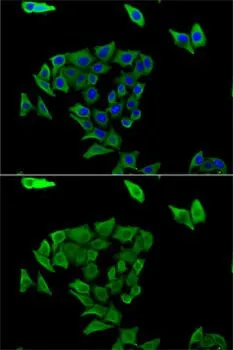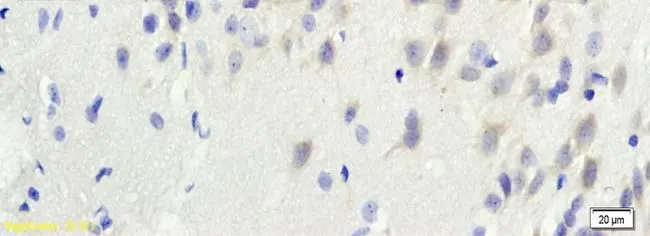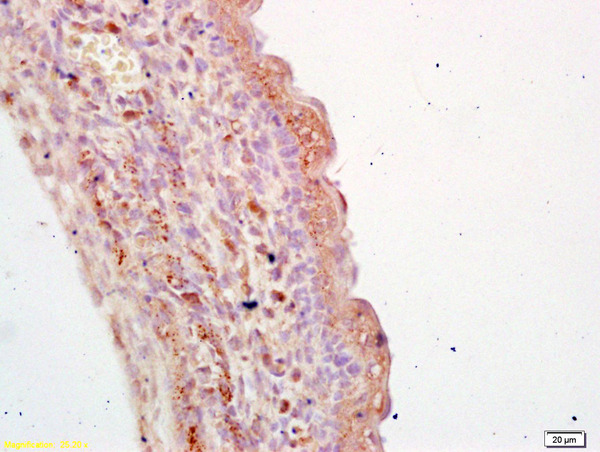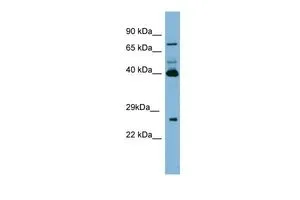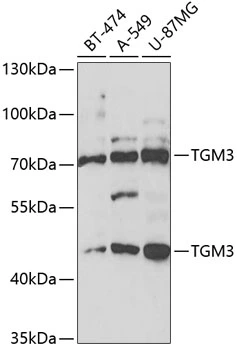
WB analysis of various sample lysates using GTX33543 TGM3 antibody. The signal was developed with ECL plus-Enhanced. Dilution : 1:1000 Loading : 25microg per lane
TGM3 antibody
GTX33543
ApplicationsImmunoFluorescence, Western Blot, ImmunoCytoChemistry
Product group Antibodies
TargetTGM3
Overview
- SupplierGeneTex
- Product NameTGM3 antibody
- Delivery Days Customer9
- Application Supplier NoteWB: 1:500 - 1:2000. ICC/IF: 1:10 - 1:100. *Optimal dilutions/concentrations should be determined by the researcher.Not tested in other applications.
- ApplicationsImmunoFluorescence, Western Blot, ImmunoCytoChemistry
- CertificationResearch Use Only
- ClonalityPolyclonal
- ConjugateUnconjugated
- Gene ID7053
- Target nameTGM3
- Target descriptiontransglutaminase 3
- Target synonymsTGE, UHS2, protein-glutamine gamma-glutamyltransferase E, E polypeptide, protein-glutamine-gamma-glutamyltransferase, TG(E), TGase E, TGase-3, transglutaminase E
- HostRabbit
- IsotypeIgG
- Protein IDQ08188
- Protein NameProtein-glutamine gamma-glutamyltransferase E
- Scientific DescriptionTransglutaminases are enzymes that catalyze the crosslinking of proteins by epsilon-gamma glutamyl lysine isopeptide bonds. While the primary structure of transglutaminases is not conserved, they all have the same amino acid sequence at their active sites and their activity is calcium-dependent. The protein encoded by this gene consists of two polypeptide chains activated from a single precursor protein by proteolysis. The encoded protein is involved the later stages of cell envelope formation in the epidermis and hair follicle. [provided by RefSeq, Jul 2008]
- Storage Instruction-20°C or -80°C,2°C to 8°C
- UNSPSC12352203

